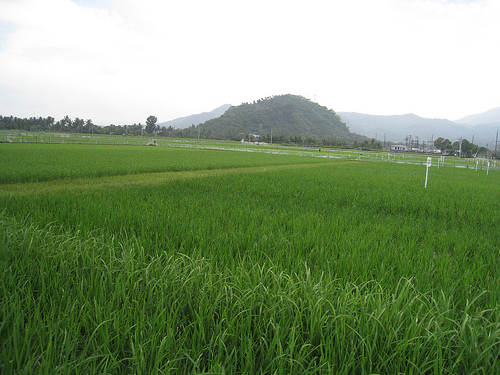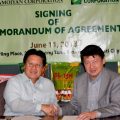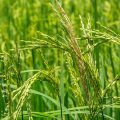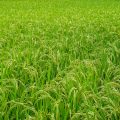The country’s hybrid rice planting in Papua New Guinea (PNG) may expand to Pacific islands Samoa, Fiji, Solomon Island and Africa’s Mozambique through partnership with Australian Calmwind Pty Ltd. (CPL).

As 30 hectares of land in PNG are already being planted with Philippines-developed SL-8H, SL-18H and SL-12H hybrid rice, SL Agritech Corp. (SLAC) sees more potential expansion in Pacific and Africa owing to its CPL partnership.
“We already signed an MOU (memorandum of understanding) with Calmwind Pty. SL Agritech’s role is to provide the technology not only in PNG, but Samoa, Solomon Island, Fiji and Mozambique where Calmwind has operation,” said SLAC Chairman Henry Lim Bon Liong.
Having operated in the Pacific islands for some time, CPL apparently wants to have an exclusive right to propagate hybrid rice in the islands.
In Southeastern Africa, CPL similarly has presence in Mozambique where the opportunity is in replacing sugarcane with rice.
“They have close to 9,000 hectares of sugarcane farm in Mozambique. But because of bad sugarcane farming, they’re looking at the possibility of hybrid rice,” according to SLAC Consultant Frisco M. Malabanan.
In PNG, the 30-hectare area faces an urgent expansion.
“This coming dry season which is within March and April (2015), Calmwind with the support of the government of PNG would like to expand immediately to 500 to 1,000 hectares,” said Malabanan.
And yet, PNG has tracts of land for rice reaching to several thousand hectares that may be the total potential expansion area.
PNG looks forward to a high yield from SL-8H using an irrigation system that is not at all very known in the Philippines.
The direct seeding (no transplanting) with overhead sprinklers for irrigation has long been adapted in Australia, where the PNG company’s parent comes from.
Such system has brought a very high average rice yield of 10 metric tons (MT) per hectare in Australia which is actually the highest average yield per hectare in the world, according to Malabanan.
The Philippines’ average rice yield is only 3.89 MT per hectare. The Philippines has the natural disadvantage in yield as it has varied land types– uplands, rainfed, and irrigated.
An advantage of rice planting in Australia is climatic—cold nights and warm day times that are good for the crop.
Australia also has simpler land preparation system which mainly involves making the land flat. Since water is sprinkled, there is no waste of water from overflow.
In the Philippines, rice planting involves trapping of water in between embankments or dikes (pilapil).
Because of the prospect to eliminate rice imports which is virtually 100 percent of supply in PNG, a government bank, the National Development Bank of PNG, is supporting the financing of CPL’s planting.
SLAC has so far deployed a technical staff to train PNG farmers on hybrid rice planting.
“There’s a very limited number of manpower who can plant hybrid rice among PNG farmers. They have zero knowledge, so we have yet to train them,” he said.
The initial pilot area in PNG is specifically found in Gabadi, also a name for a people group in PNG.
PNG imports a significant volume of 300,000 metric tons of rice yearly from other countries like Vietnam.
###
For any questions or interview requests, kindly contact 0999-573-7077, 0917-733-6628.





